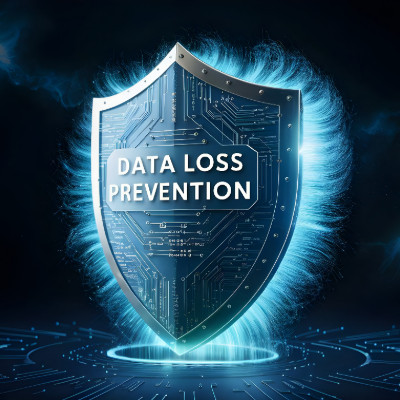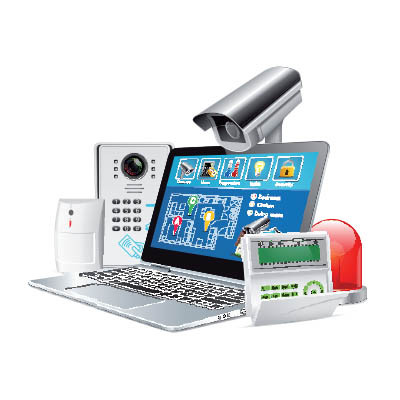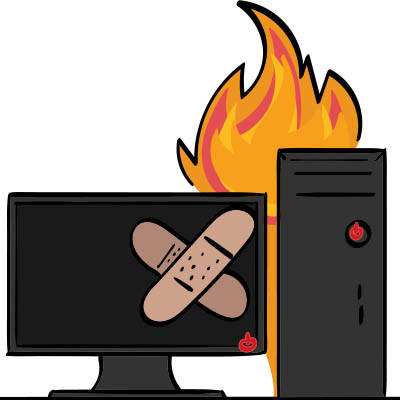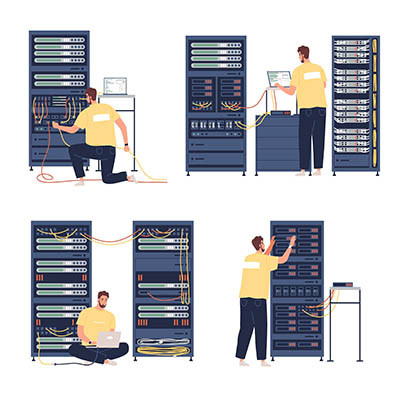NetWorthy Systems Blog
Your Point of Sale (POS) system does more than ring up sales, it’s the control center that keeps your entire operation running. From processing payments to managing inventory and generating reports, it plays a vital role in your daily business flow. Like any technology, a POS system can get old, glitchy, or just fall behind. If you’ve been questioning whether yours is still doing the job, here are five clear signs that it’s time to move on and upgrade to something better.
There are plenty of reasons why a business might lose some or all of its data, ranging from cyberattacks to hardware failure. Unfortunately, there isn’t any real reason your business won’t be one of the unlucky ones.
This makes it imperative that you prepare for this eventuality. Let’s discuss how to do so with the help of data redundancy.
Security should be at the top of any business owner’s list of priorities. While cybersecurity often gets the spotlight, physical security is just as critical; after all, if someone can walk in and steal your equipment, all the firewalls in the world won’t help you. Fortunately, technology has made it easier than ever to protect your business from physical threats. Here are some physical security technologies small businesses can use to keep their assets safe.
The entire purpose of modern IT is to improve the processes that work requires us to do. Today, we wanted to address a few business priorities—productivity, cybersecurity, and accessibility—that the right tech can help you accomplish, explicitly exploring how different tools can contribute to your success.
Businesses run on collaboration, and thanks to technology, working together has never been easier. The right tools can make all the difference, helping teams communicate better, stay organized, and keep projects moving forward. Let’s go into the aspects that make some of the key collaboration tools businesses are using today work.
Imagine owning an elevator that you would only service if it broke down? Sounds ridiculous, right? Well, that’s exactly what businesses do when they rely on a break/fix IT strategy.
Break/fix IT means waiting until something goes wrong before calling in the experts. While this might seem like a cost-saving move, in reality, it’s a fast track to frustration, downtime, and lost revenue. Let’s break down why this approach makes no sense in today’s business world.
For businesses, one of the scariest threats out there is that of compliance fines for not holding up your end of the bargain with your customers’ data. But what goes into compliance, and what does it look like? We won’t be digging into the nitty-gritty of what these specific regulations require; rather, we’re performing a broad analysis of what businesses should be doing to ensure compliance, regardless of the protocol or the industry.
With businesses relying so much on technology to accomplish just about everything, IT undoubtedly has an important role to play. It makes sense that you would want your business’ IT to deliver as much value as possible. To accomplish this, we wanted to go over three IT-centric processes that are primed to help you do so.
For most of the past years small business owners have been raked over the coals as dealing with sudden economic and political shifts isn’t often great on the budget. In fact, many businesses haven’t made it this far. If yours has, you are almost certainly looking for value in every business investment that you make. There are few investments that you can make for your business that carry more value than managed IT services. Today, we’ll tell you how.
Seeing as technology is a critical component of most business processes nowadays, it is effectively guaranteed that it will benefit your operations to abide by a few particular best practices. Let’s review these practices now so you can move forward and use your technology to its highest capabilities.
We’re getting close to the end of 2020. Finally? Has it been a long year for you? Has it gone by really fast? I think every other day I have a different opinion about it.
Either way, it’s time to look at 2021. A fresh start, a clean slate. I think if there is one big mindset all business owners and C-levels need to take into consideration for 2021, it’s their people.
Unfortunately, we are not yet rid of the concern of COVID-19 and the impact that it has had on business survivability. With “business as usual” requiring a few drastic adjustments to continue, it is important that small businesses are able and willing to embrace these changes. Research conducted by Salesforce presented in their fourth Small & Medium Business Trends Report shows that many businesses are seeing the importance of these changes.
While it’s hard to say anything positive about the COVID-19 pandemic, it has given many business owners the motivation to pick up a few more technical skills. Many have sought to improve their own grasp on the software, marketing, and telecommunications that their business relies on each day. As these business owners have done so, they have often turned to a very popular resource: YouTube.
The world isn’t the same as it was at this time last year. With months of question marks surrounding business, and with more people than ever searching for their place, companies have had to make some operational concessions that, if we were to assess the situation today, don’t seem to be going anywhere, anytime soon.
Modern businesses have a lot more room for flexibility than in the past, particularly in regard to meetings. With the inception of conferencing solutions, organizations have access to more dynamic tools to make the most of their meetings. Determining the best one for you, though, is not easy. We’ll help you make that choice in the simplest terms possible.
There is always going to be user error in the workplace. Even the best workers make mistakes sometimes. You naturally want to reduce these occurrences as often as possible, but for the purposes of training and whatnot, you want to assume the worst: that any worker, even the most dedicated veteran, could potentially make a business-ending mistake. Thankfully, there are ways you can make sure this doesn’t happen for your business.
Server units--you’ll find them in most offices out there, but they are all used for different purposes. Since well-maintained data is so essential to the success of many organizations, it’s important to keep your server units in proper working order. Today we’ll discuss the best ways to make sure your servers are in peak performance.




















